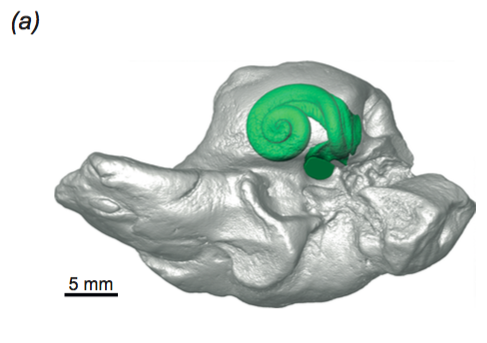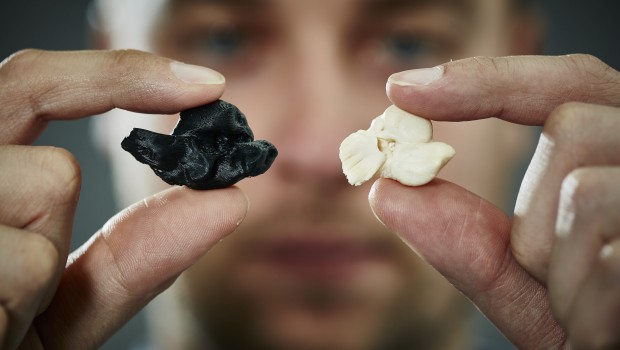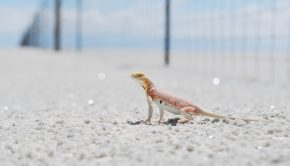Evolution of echolocation in dolphins
Echolocation is an amazing ability that some mammals have evolved. Using sonar frequencies, dolphins and other toothed whales can communicate with each other and hunt prey, making the unique amongst marine mammals at being able to hear and interpret these high frequencies. But when did echolocation in dolphins evolve?
A new study published today and lead by PhD student Travis Park from Monash University found that even 26 million years ago, this ability was possible in at least some cetaceans. By looking at an ear bone from an early toothed whale (a xenorophid) and comparing it to modern material using CT scanning, they were able to see some patterns. They found that the structure of these bones was remarkable similar between the fossil toothed whale and modern dolphin, despite being separated by 26 million years. Since echolocation is one of the major reasons why modern toothed whales (odontocetes) are thought to be so successful, the evolution of it so early on is significant.

Digital model reconstructed using CT scans of the fossil xenophorid periotic bone with the inner green cochlea shown. From Park et al. 2016.
Park had this to add: “This study opens the door into a whole new way of comparing extinct toothed whales to living species. We can see what types of inner ears correspond to certain hearing abilites and look back millions of years in the past to see if extinct animals were doing it too. For example, a recently described species of xenorophid known as Cotylocara has elaborations of particular bones of its skull associated with echolocation that resemble those seen in modern beaked whales. We know that beaked whales have very specialised hearing abilites. What could be done is the inner ears of both could be compared to see if they to possess similar adaptations for high frequency hearing. This is just one example, there plenty more that if had time (and funding) to do!”
The next step is to understand exactly when and how echolocation evolved. We now know it was present at least 26 million years ago, but just how early did it appear in the odontocete record?
Top image caption: Comparison of ear bone (periodic) of xenorophid (L) and a modern-day dolphin (R). Image source Museum Victoria, photographer Ben Healley.
Video caption: 3D digital reconstruction using CT scans of a fossil xenorophid ear bone. Inner red portion is the inner ear or cochlea, important for echolocation. Video courtesy of Travis Park.
Reference:


















